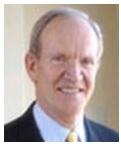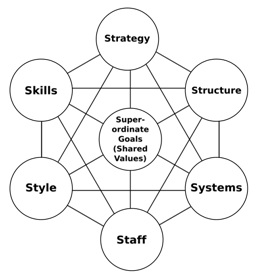|
 |
|
 |
Tom Peters and Robert Waterman, In Search of Excellence
(1982)
Peters is an American management guru (pictured right) famous ever since this hugely influential and popular book. Waterman (pictured right below) also became a successful management consultant and writer. They were working for McKinsey, the American management consultants, when they wrote the book. See also... Tom Peters and Robert Waterman in the Management Gurus section.
Book summary
Why is this book so famous? Its huge popularity changed the business book market overnight. Millions worldwide were inspired by how business excellence was achieved by American companies
like:
Characteristics of excellent companies
1. Hands-on value driven
2. Close to the customer
3. A bias for action
4. Autonomy and entrepreneurship Encouraging innovation through:
5. Productivity through people Maximizing employee potential and performance through:
a) respectfully treating people as adults
and equal partners Giving them:
b) rewarding results and sharing information c) small teams and business units (so that people can more easily identify with them).
d) celebrating success and having fun (“hoopla, celebration and verve”) e) humanity Compassion mixed with:
f) wise recruitment (picking the right people with the right attitudes).
g) inspirational leadership Leaders inspiring employees to become:
6. Sticking to the knitting
7. Simple form, lean staff
8. Simultaneous loose-tight properties A mixture of centralization and decentralization:
The 7-S Framework Peters and Waterman wrote the book as employees of the American management consultants, McKinsey, and used its
7-S Framework (pictured right) to analyse an organization’s success:
Key quote on customers Customers reign supreme.
Key quote on the learning organization The excellent companies are learning organizations
Key quotes on business successs Far too many managers have lost sight of the basics...quick action, service to customers, practical innovation and the fact that you can’t get any of these without virtually everyone’s commitment. KISS: Keep It Simple Stupid!
Key quote on human resource management Treat people as adults. Treat them as partners; treat them with dignity; treat them with respect. The excellent companies require and demand extraordinary performance from the average man.
Key quote on corporate culture The excellent companies live their commitment to people.
Key quote on products They give people pride in what they do. They make it possible to love the product (talking about excellent companies) |
|
|
||
|
|
|
||
|
||
| Copyright © wisdomtowin.com All Rights Reserved | ||
|















